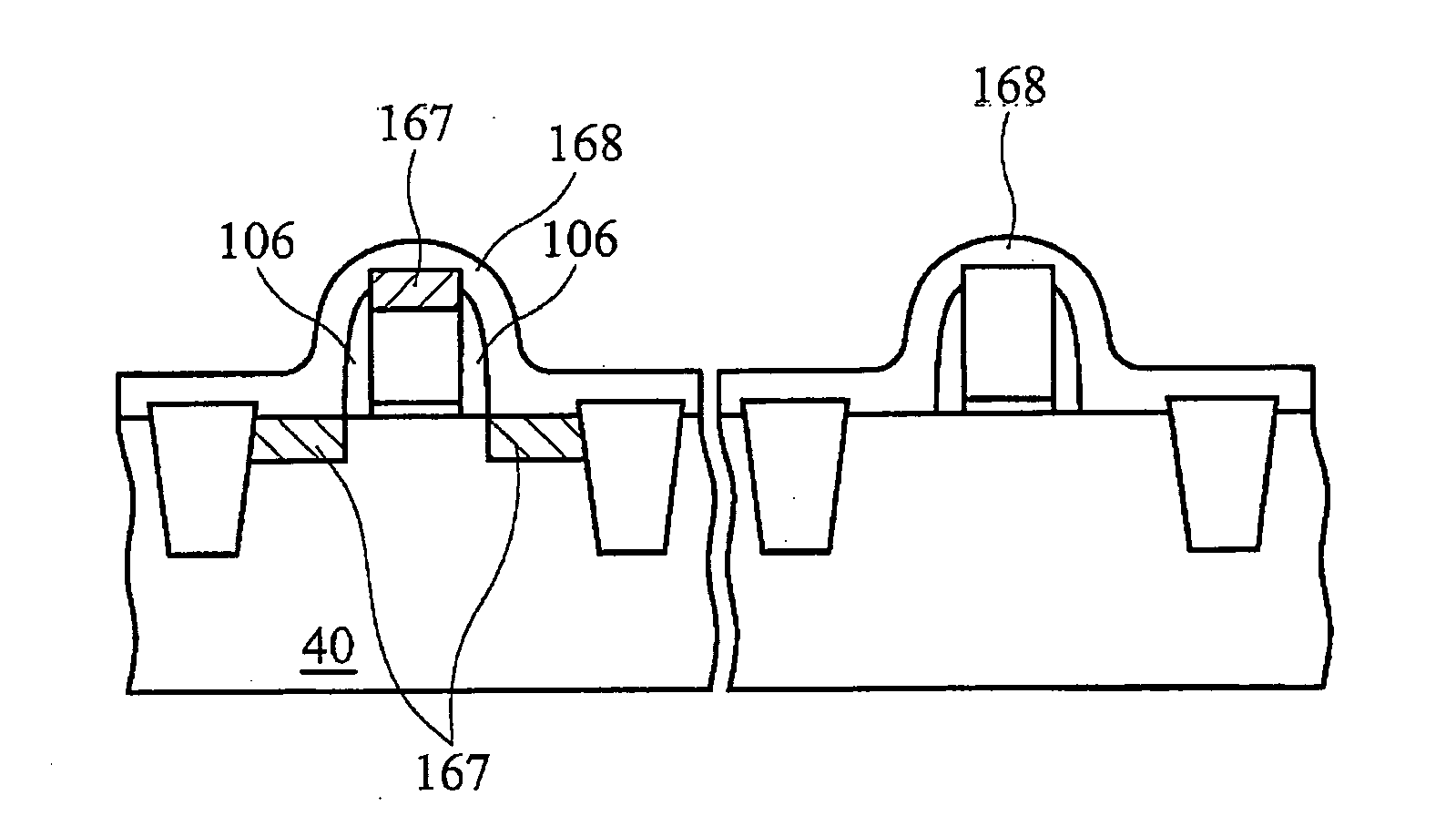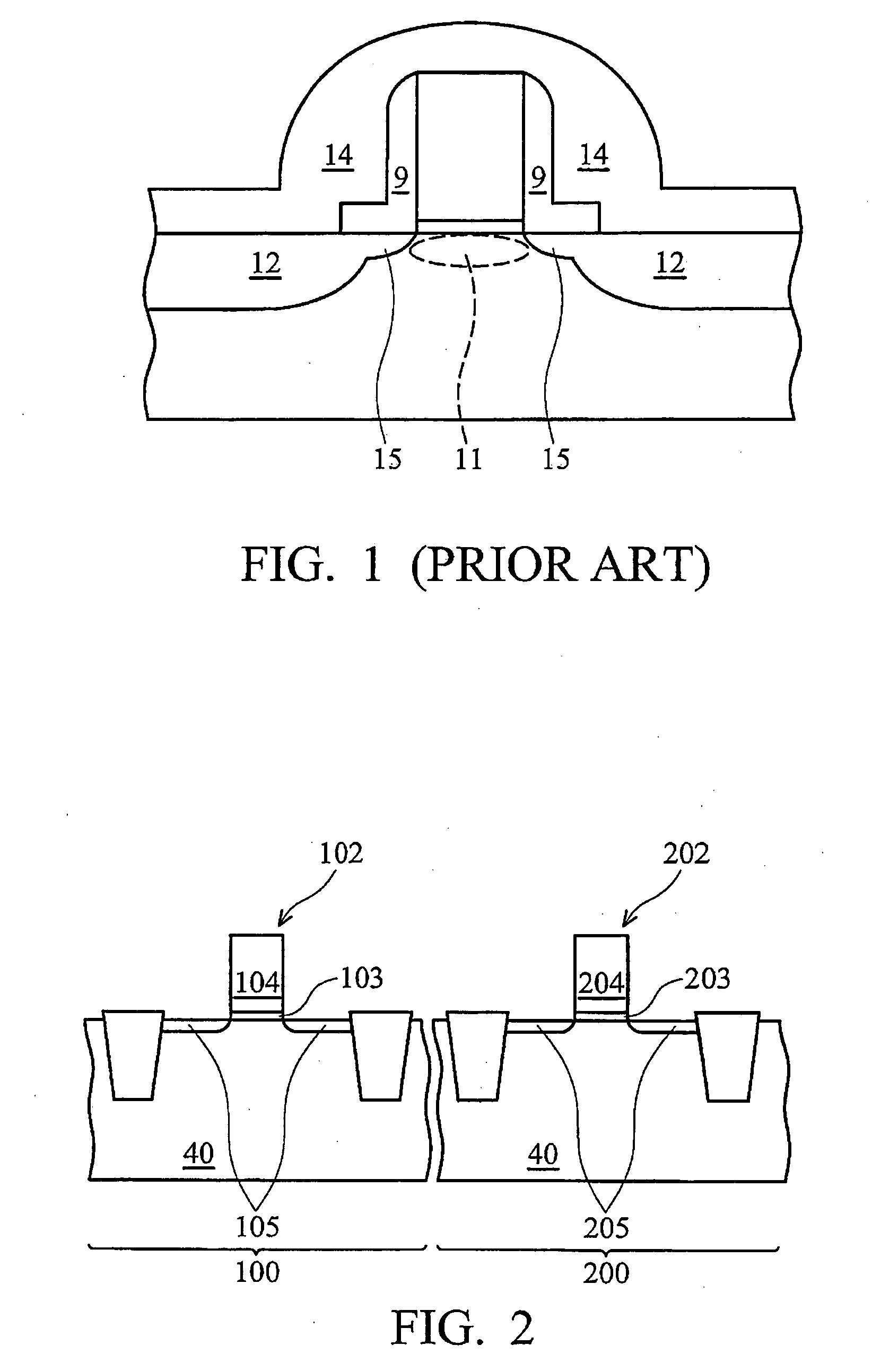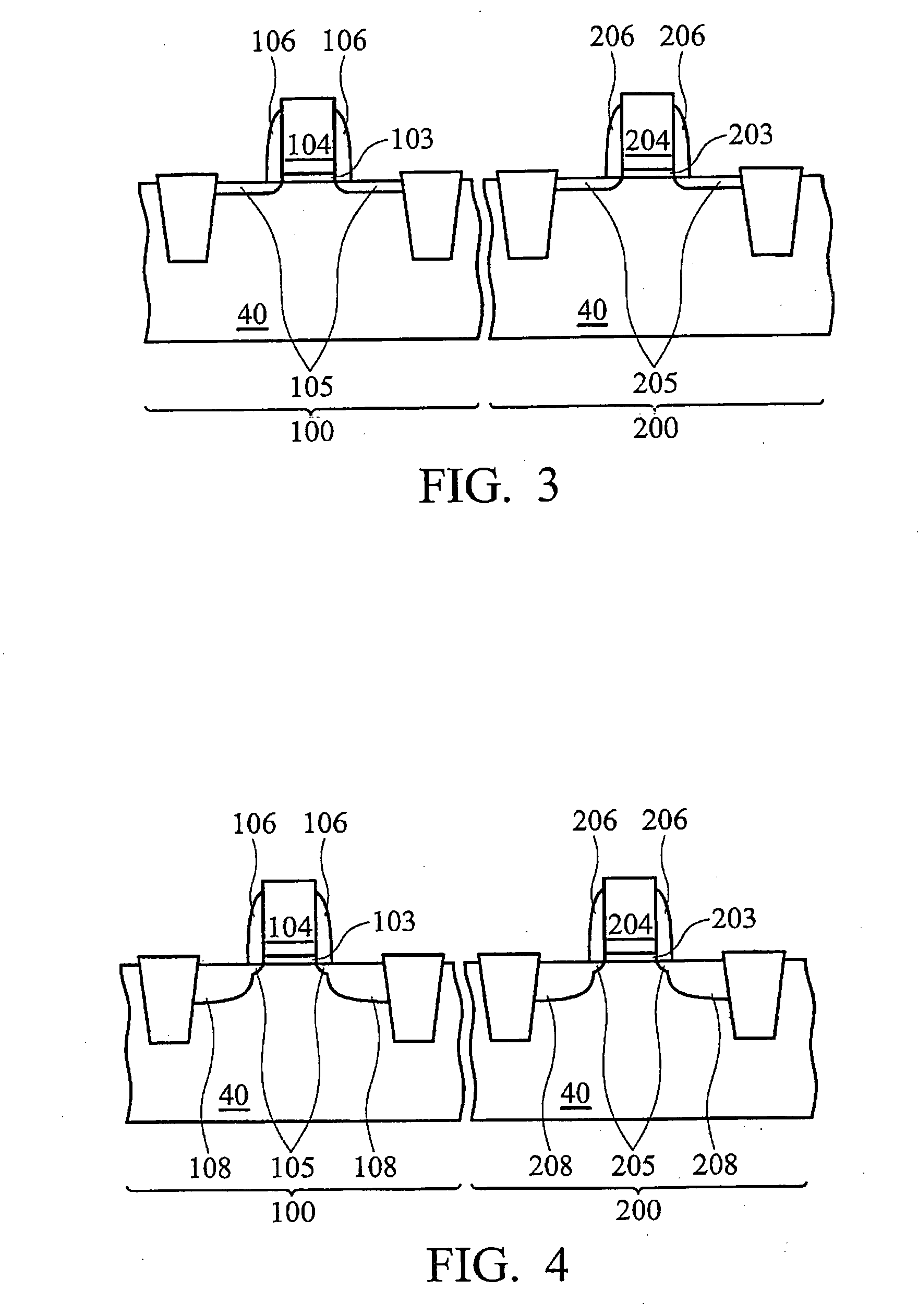Method of forming a MOS device having a strained channel region
a technology of metal oxidesemiconductor and channel region, which is applied in the direction of semiconductor devices, electrical equipment, transistors, etc., can solve the problems of limiting the strain that can be applied by the capping layer, the thickness of the strained capping layer is limited, and the constant effort of the vlsi circuit scaling, etc., to achieve the effect of improving the strain in the mos device without increasing the thickness of the contact etch stop layer
- Summary
- Abstract
- Description
- Claims
- Application Information
AI Technical Summary
Benefits of technology
Problems solved by technology
Method used
Image
Examples
Embodiment Construction
[0019] The making and using of the presently preferred embodiments are discussed in detail below. It should be appreciated, however, that the present invention provides many applicable inventive concepts that can be embodied in a wide variety of specific contexts. The specific embodiments discussed are merely illustrative of specific ways to make and use the invention, and do not limit the scope of the invention.
[0020] The preferred embodiments of the present invention are illustrated in FIGS. 2 through 9. Variations of the preferred embodiments are then discussed with reference to FIGS. 10 through 12. Throughout the various views and illustrative embodiments of the present invention, like reference numbers are used to designate like elements.
[0021] Referring to FIG. 2, a substrate 40 is provided. The substrate 40 can be formed of common substrate materials such as silicon, SiGe, strained silicon on SiGe, silicon on insulator (SOI), silicon germanium on insulator (SGOI), germanium...
PUM
 Login to View More
Login to View More Abstract
Description
Claims
Application Information
 Login to View More
Login to View More - R&D
- Intellectual Property
- Life Sciences
- Materials
- Tech Scout
- Unparalleled Data Quality
- Higher Quality Content
- 60% Fewer Hallucinations
Browse by: Latest US Patents, China's latest patents, Technical Efficacy Thesaurus, Application Domain, Technology Topic, Popular Technical Reports.
© 2025 PatSnap. All rights reserved.Legal|Privacy policy|Modern Slavery Act Transparency Statement|Sitemap|About US| Contact US: help@patsnap.com



